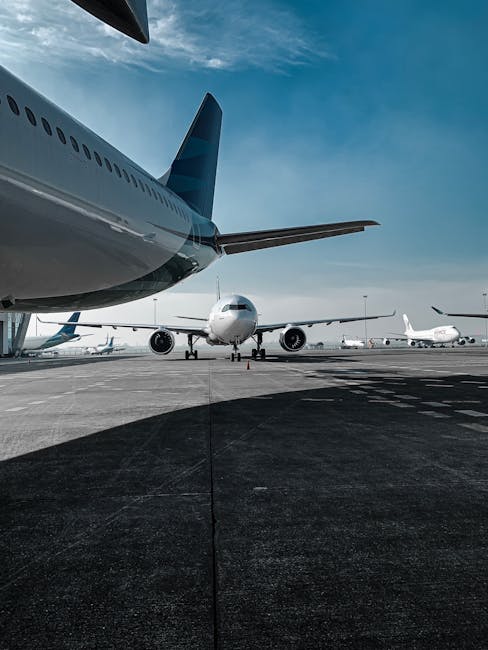The B-2 Spirit’s 36th birthday is more than just a milestone—it’s a testament to the enduring innovation and mystique of one of aviation’s most iconic aircraft. On July 17, 1989, the world watched in awe as the first B-2 stealth bomber streaked silently across the skies of California, taking off from Palmdale’s Plant 42 and landing at Edwards Air Force Base. Piloted by Bruce Hinds, that inaugural flight heralded a new era in military aviation, one defined by radar evasion, cutting-edge technology, and futuristic design. Today, 36 years later, the B-2 remains as relevant—and as intimidating—as ever.
From Cold War Concept to Modern Marvel: The B-2’s Origins
The late 1970s and 1980s were a period of intense technological competition between the United States and the Soviet Union. With nuclear deterrence at the heart of defense strategy, the U.S. Air Force demanded a bomber that could penetrate deep into enemy territory, undetected by the latest radar systems. Northrop (now Northrop Grumman) answered the call, embarking on a top-secret endeavor known as the Advanced Technology Bomber (ATB) program. The result: the B-2 Spirit.
Unveiled to the public in 1988, the B-2’s distinctive “flying wing” layout and radar-absorbent materials were designed to maximize stealth. Its first flight on July 17, 1989, was the culmination of years of clandestine research and an investment that would ultimately cost billions—but forever change the rules of aerial warfare.
By the Numbers: 36 Years of Stealth Supremacy
- First Flight: July 17, 1989
- Years in Service: 36
- Total Built: 21 aircraft
- Wingspan: 172 feet (52.4 meters)
- Length: 69 feet (21 meters)
- Height: 17 feet (5.18 meters)
- Maximum Takeoff Weight: 336,500 lbs (152,634 kg)
- Range: 6,000 nautical miles (11,112 km) unrefueled
- Top Speed: High subsonic (Mach 0.95)
- Crew: 2 (pilot and mission commander)
- Payload: Up to 40,000 lbs (18,144 kg) of conventional or nuclear ordnance
- Unit Cost: Estimated at over $2 billion per aircraft (including R&D)
Why the B-2 Matters: Strategic Stealth and Global Reach
What set—and still sets—the B-2 apart from its predecessors is its stealth technology. Unlike conventional bombers, the B-2 can slip past the world’s most advanced air defense systems, thanks to its radar-evading shape, special coatings, and electronic countermeasures. This allows the Spirit to operate where other aircraft cannot, delivering precision strikes with little warning and minimal risk of detection.
Over the past 36 years, the B-2 has demonstrated this capability on the world stage, flying from bases in the continental United States to targets across the globe. Notably, B-2s were among the first aircraft to strike during the 1999 Kosovo conflict, Operation Enduring Freedom in Afghanistan, and Operation Iraqi Freedom. Their ability to fly more than 40 hours non-stop with air refueling, deliver both conventional and nuclear payloads, and return home unseen remains unmatched.
Technological Innovations: The B-2’s Lasting Legacy
The B-2 wasn’t just a leap forward for bombers—it was a quantum leap for aviation as a whole. Its legacy can be measured in several key areas:
- Stealth Technology: The B-2 pioneered the integration of radar-absorbent composites and precision-engineered surfaces to minimize radar cross-section, setting the template for future stealth aircraft like the F-22 Raptor and F-35 Lightning II.
- Fly-by-Wire Systems: With no vertical stabilizers and a tailless wing, the B-2 is inherently unstable. Advanced computer-controlled fly-by-wire systems keep it stable, a concept now standard in modern military and commercial jets.
- Global Reach: The B-2’s range and aerial refueling capability redefined what was possible for global strike missions, influencing the design philosophy of subsequent long-range bombers and tankers.
- Low Observable Maintenance: The aircraft’s complex coatings and materials spurred advances in maintenance techniques and logistics, knowledge that has since filtered down to both military and civilian aerospace sectors.
Impact Beyond the Battlefield
Though designed for war, the B-2’s influence extends far beyond the military. Its stealth technology has pushed the boundaries of materials science, computational fluid dynamics, and aerodynamics. Lessons learned from the B-2 program have found their way into commercial aviation, including better understanding of laminar flow, composite construction, and automated flight control systems.
For aviation enthusiasts, the B-2 represents the pinnacle of “black project” engineering—a symbol of what happens when the world’s best minds are given a blank check and a mandate to invent the future. Its unmistakable silhouette, often seen gliding silently over airshows or in flyovers on national holidays, continues to inspire awe and admiration.
The B-2 Today: Still the Spirit of Stealth
Now well into its third decade of operation, the B-2 remains a cornerstone of America’s strategic bomber fleet. While the U.S. Air Force is preparing to introduce the new B-21 Raider in the coming years, the B-2 is expected to remain active into the 2030s. Continuous upgrades—including improved avionics, new defensive systems, and enhanced weapons integration—ensure that the Spirit stays relevant in a rapidly changing threat environment.
Remarkably, despite its age and the emergence of new stealth platforms, no other nation has fielded an operational counterpart to the B-2. Its blend of range, payload, and near-invisibility is still unmatched, a testament to the vision and ingenuity of its creators.
Conclusion: 36 Years Young and Still Commanding the Skies
The B-2 Spirit is more than just a bomber—it’s a flying symbol of technological audacity and strategic deterrence. As it celebrates its 36th birthday, the B-2 stands as a beacon of what’s possible when innovation meets purpose. For the aviation world, the B-2 is not just a chapter in the history books; it’s an ongoing story of excellence, adaptation, and inspiration.
So here’s to 36 years of the Spirit: still silent, still deadly, and still redefining what it means to command the skies.



